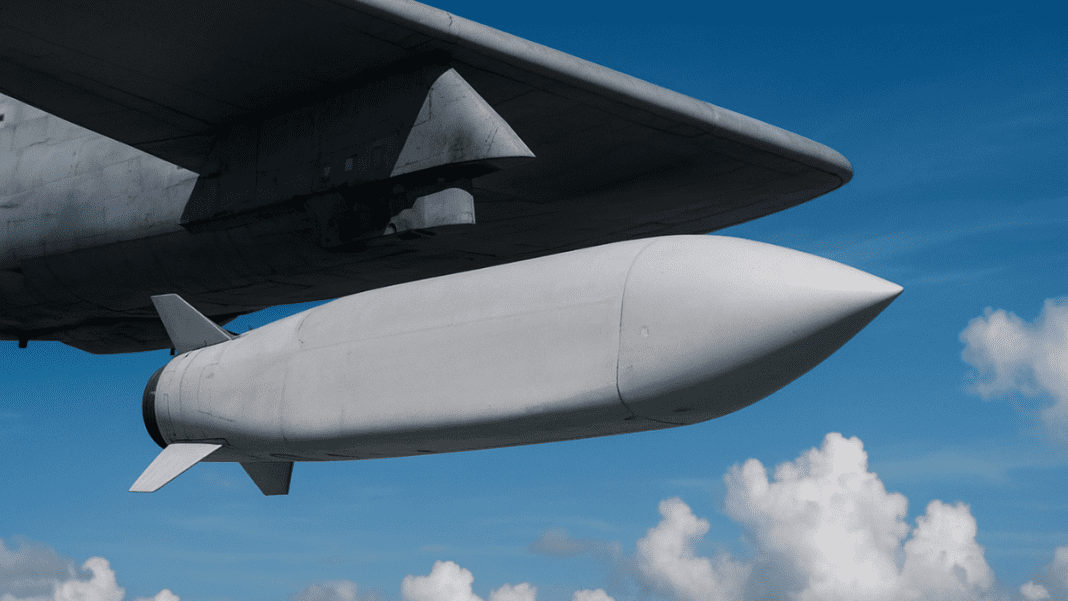The United States has approved a staggering $7.8 billion package to boost its missile arsenal at a time when threats from China and Russia are growing rapidly. The Pentagon announced the fresh contracts on July 31, marking one of the biggest expansions in U.S. missile stockpiles in recent years.
Pentagon Expands Missile Arsenal With $7.8 Billion Buy
The new orders cover three of America’s most important weapons: the AGM-158 Joint Air-To-Surface Standoff Missile (JASSM), the AGM-158C Long-Range Anti-Ship Missile (LRASM), and the AIM-120 Advanced Medium Range Air-to-Air Missile (AMRAAM). These systems strike enemy bases, warships, and aircraft from long distances, reducing risks to U.S. pilots and forces.
Out of the total $7.8 billion, the U.S. allocated the largest share to contracts for JASSM and LRASM. U.S. forces will receive these advanced missiles, and Poland, the Netherlands, Japan, and Finland will also take deliveries. This deal modifies an earlier agreement and raises the contract’s total value to around $9.5 billion.
India Raises Concerns Over US-Turkey $225M AMRAAM Missile Deal Amid Turkey-Pakistan Ties
The timing of this move is crucial. Ongoing conflicts in the Middle East and continuous military aid to Ukraine have strained the U.S. missile arsenal. Officials confirmed that the U.S. must replenish missile stockpiles to maintain readiness against potential threats, particularly from China, which they view as the most significant security challenge.
JASSM & LRASM: Powering America’s Missile Arsenal
The Joint Air-to-Surface Standoff Missile (JASSM) is a stealthy, precision-guided cruise missile designed to hit heavily protected enemy targets like command centers, air defense sites, and infrastructure. With a range of over 300 kilometers, and up to 925 kilometers for the JASSM-ER, it is one of the most powerful weapons in the U.S. missile arsenal.
JASSM carries a 450-kilogram warhead and uses an advanced infrared seeker with target-tracking technology. This allows it to accurately destroy hardened or moving targets. Its stealth design lets it fly at higher altitudes while avoiding radar, giving it greater range than older cruise missiles.
Bombers like the B-1B and B-52, along with fighters such as the F-16, F-15E, and F/A-18, can launch the missile. The U.S. is also adding it to the F-35 stealth fighter, creating a “stealth-on-stealth” pairing. This combination strengthens the U.S. missile arsenal by enabling strikes deep inside enemy territory.
🧨 U.S. slams sanctions on North Korea’s fake job ring funding missile programs
The U.S. developed the Long-Range Anti-Ship Missile (LRASM) from the JASSM design to target ships and other high-value maritime assets. Unlike the older Harpoon, the LRASM operates effectively in heavy electronic warfare conditions and destroys warships without relying on GPS or external guidance.
With a range of more than 370 kilometers, the LRASM uses semi-autonomous navigation and infrared sensors to locate targets. This capability lets it strike even in jamming environments while hitting vulnerable points of enemy vessels. Bomber crews, fighter pilots, and naval aviators can all launch the missile.
Reports suggest forces have already used the LRASM in real-world combat. U.S. records mention the replacement of missiles fired during military responses linked to the conflict in Israel, pointing to its deployment in Middle East operations.
Record-Breaking AMRAAM Order
The U.S. signed a record $3.5 billion contract for the AIM-120 AMRAAM, one of the most widely used air-to-air missiles. This deal, the largest in the program’s history, will supply the U.S. and 19 partner nations, including Japan, Germany, Australia, Poland, the United Kingdom, and Ukraine.
The AMRAAM gives fighter jets the ability to strike enemy aircraft from long distances and is also used in ground-based defense systems such as NASAMS. Its versatility makes it a crucial part of the U.S. missile arsenal.
Trump’s $892B defense shake-up slashes F-35 jets, fuels drone surge in bold Indo-Pacific shift
The missile has already seen heavy use, from protecting Israel against attacks to countering drone threats in the Middle East. Its proven performance ensures it remains central to both U.S. and allied missile arsenal needs.
To meet rising global demand and replenish stockpiles, the Pentagon confirmed that AMRAAM production will be expanded. Thousands of new missiles will be delivered, strengthening the overall missile arsenal and maintaining air combat superiority.

